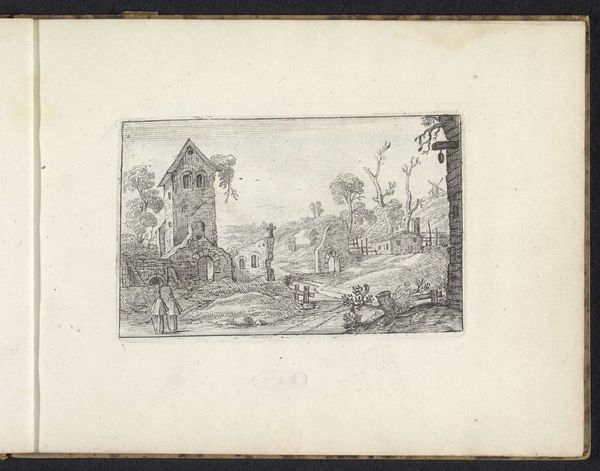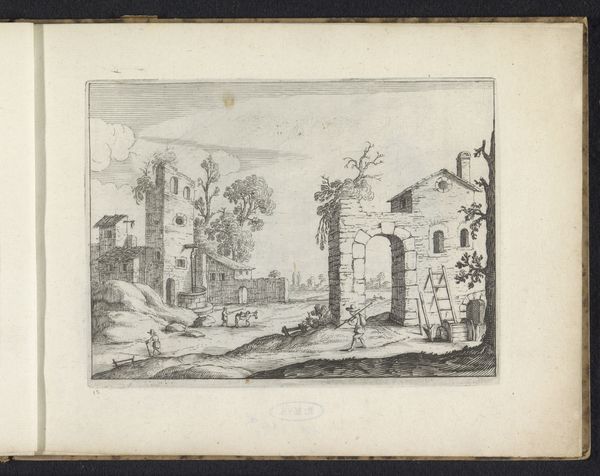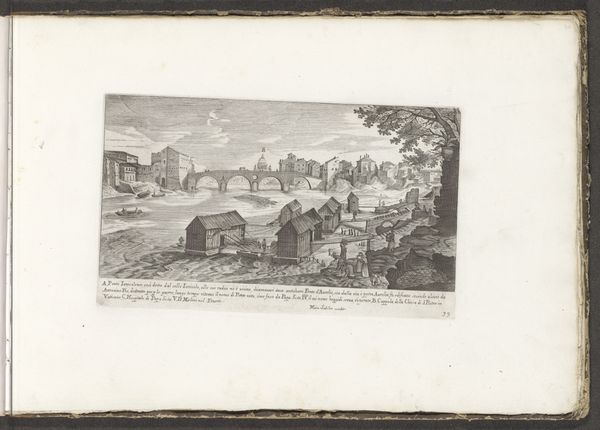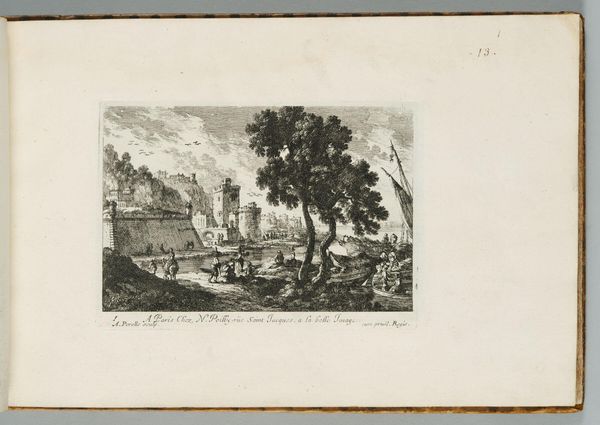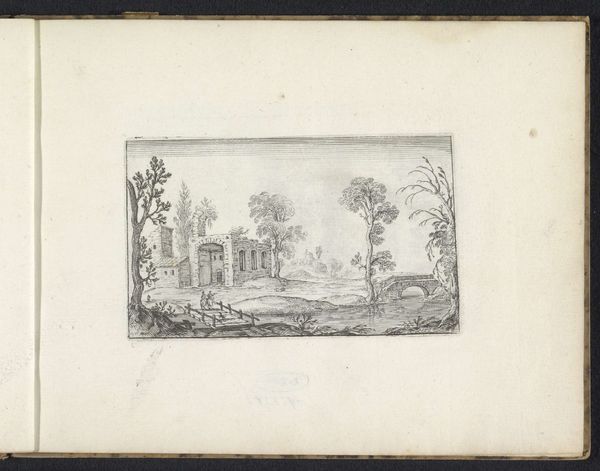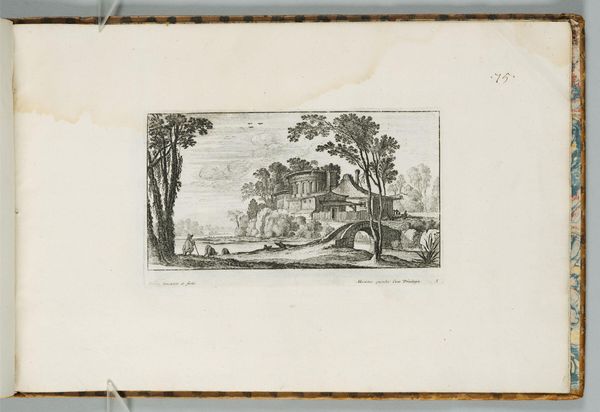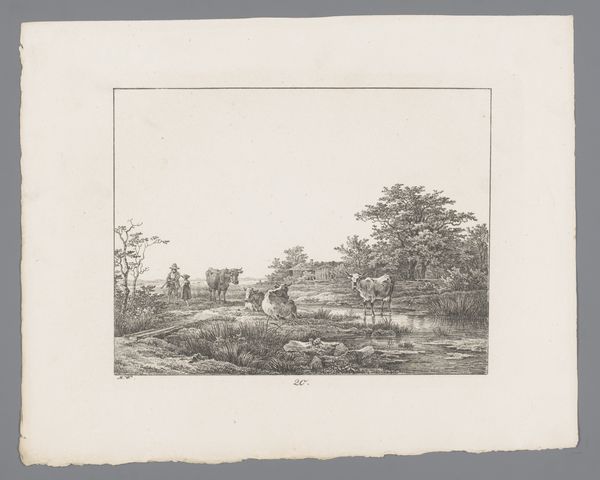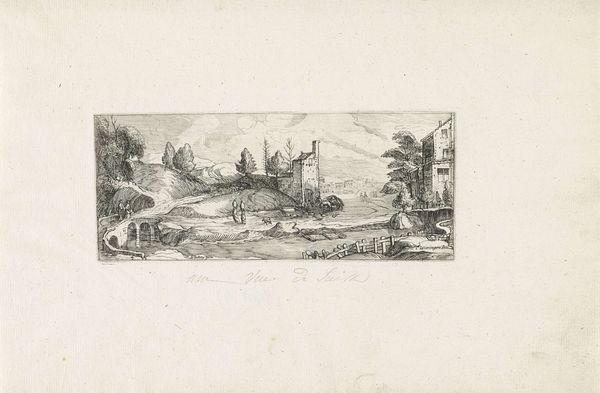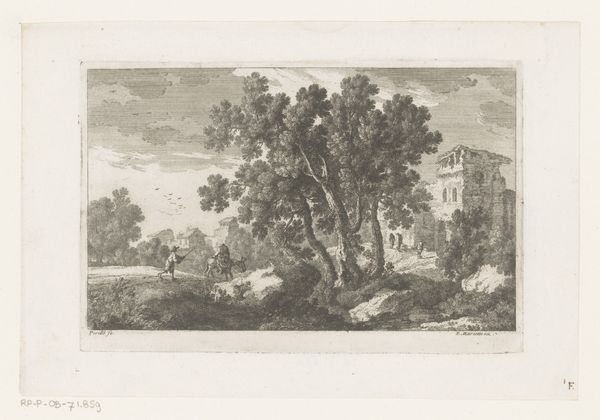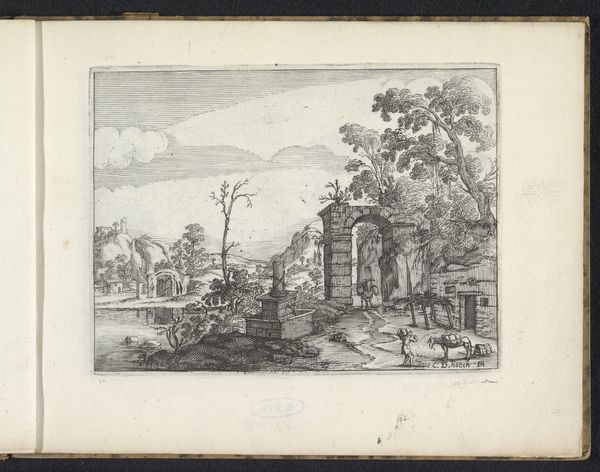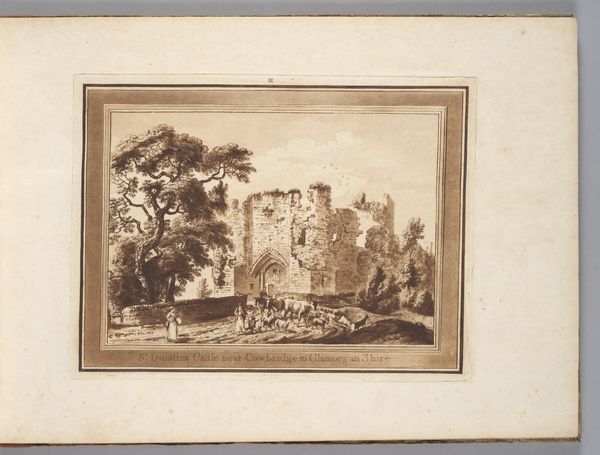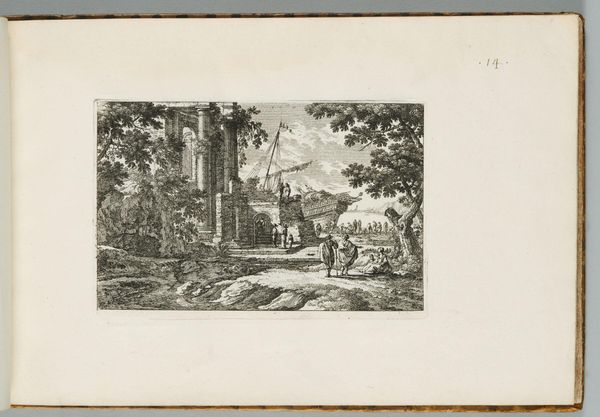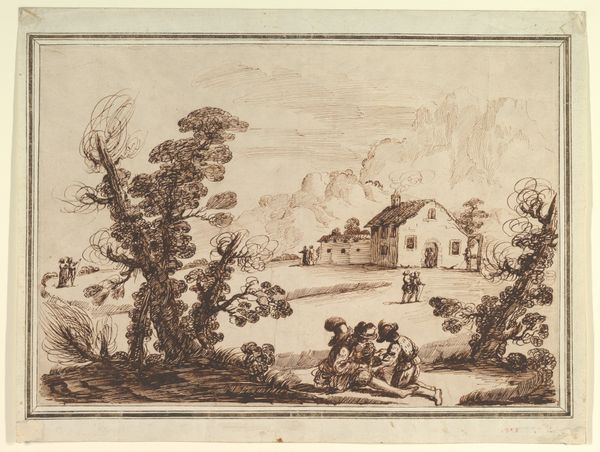
print, etching
#
baroque
# print
#
etching
#
landscape
#
figuration
#
line
Dimensions: height 78 mm, width 115 mm
Copyright: Rijks Museum: Open Domain
Curator: This is "Landschap met een muurfontein," or "Landscape with a Wall Fountain," an etching made by Charles de Hooch sometime between 1610 and 1638. Editor: Huh. Sort of a spooky, post-apocalyptic vibe, right? I mean, there's this imposing structure that looks half ruined, figures milling around, and this... elaborate fountain sort of just plopped in the middle of everything. I get a melancholy sense, as if I should brace for some kind of bad news. Curator: The artist was working during the Baroque period, a time heavily shaped by the Reformation. You see some strong examples of detailed line work to construct an elaborate view of the past. Etchings were readily accessible at the time and allowed for wider dissemination of particular landscapes or biblical settings that shaped a sense of community and identity. Editor: Interesting! That idea of community reminds me how tiny the figures are in relation to everything else, totally dwarfed by this abandoned space. But then the fountain itself feels a little whimsical... I imagine some mischievous forest sprite tinkers around with it after dark. Curator: Fountains were, of course, status symbols—statements of wealth, sophistication and control over nature. Positioning it here might evoke a kind of commentary on the transience of those earthly powers. Editor: It does feel weirdly out of place. A beautiful ruin made useful once again as a humble water source. The whole scene is beautiful yet so quiet and... static. But look closely. It's filled with small dramas, from a crumbling castle, to some walking men, even this improbable fountain gushing in the foreground. Curator: I find myself dwelling on the relationship between human creation and the natural world depicted. And like a painting of the period it directs the audiences towards moral issues regarding civilization. Editor: True, it makes you think about how fragile human achievements really are. Well, this one's definitely given me plenty to chew on... like where I can find my own woodland fountain, hopefully, sans apocalypse. Curator: A reflection, indeed, on how art can reflect, influence and shape societal views, as we each seek solace and understanding in these landscapes of yesterday.
Comments
No comments
Be the first to comment and join the conversation on the ultimate creative platform.
